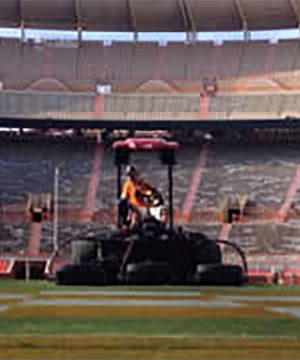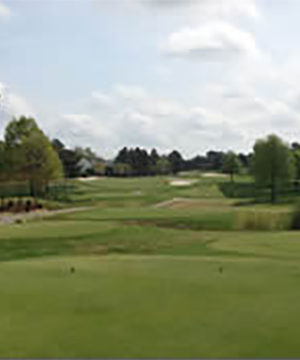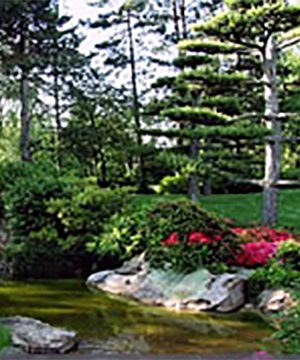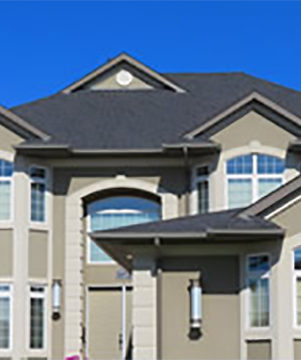Please click on one of the images below to find out more about Turfgrass:
A motto of sports turf managers is safety first. A smooth, uniform sports turf is resilient and cushions student and professional athletes as they fall. Turfgrass wear and soil compaction are two major challenges. The intensity level and annual cost of managing a sports field in Tennessee varies depending on location, weather, soil type, turfgrass species, pest activity, sport and amount of play. In addition to requiring vigorous, routine maintenance, sports fields must be well drained and irrigated.
A major goal of a golf course superintendent is to provide an appropriate, year-round turfgrass surface to allow the golfing public to “play the ball as it lies.” An excellent shot is rewarded and an errant shot penalized. The level of management intensity a turfgrass species receives depends on location and purpose. Bentgrass and bermudagrass greens are often mowed daily at a cutting height of 3/16-inch or less and the quality of the putting surface must be consistent from one green to the next. Tall fescue and bermudagrass in the deep rough may be mowed twice weekly, at a height of 2 or more inches. In Tennessee, every superintendent is, to some extent, practicing integrated pest management, a strategy involving agronomy, biology and chemistry.
Turf serves as a unifying element in a public garden, the green background used to feature other landscape plants including trees, shrubs, hedges, herbaceous ground covers and annual and perennial flowers. In addition to providing erosion control, turfgrass walkways direct visitors from one part of the garden to the next. Depending on location and use, the required level of turfgrass management often ranges from low, medium to high intensity. This site contains information which is intended to help administrators and staff develop strategies to establish and maintain uniform turf of appropriate quality.
Home Lawns:
In Tennessee, residential lawns account for nearly 70 percent of the total turfgrass acreage and an average-sized lawn is more than 24,000 square feet in area. New turfgrass varieties, improved equipment and effective lawn care products offer homeowners the opportunity to have an attractive, uniform and durable outdoor living area. This site is intended to help homeowners with and without a green thumb” maintain healthy turfgrasses without spending too much time working in the lawn to enjoy it.
Commercial Lawns:
Landscapers and lawn care professionals develop and use turf management plans to meet the needs of commercial businesses and homeowners throughout Tennessee. Turfs are often classified according to anticipated overall quality and required maintenance intensity. For example, turf in an A Zone may be irrigated, mowed often at a relatively low cutting height, routinely fertilized and aerified or dethatched once each year. Pesticides are often applied to turf in an A Zone on a preventative basis to protect against weeds, insects and disease. Turf in a B Zone may not be irrigated, may be fertilized no more than two or three times each year and may be mowed at a slightly higher cutting height than turf in an A Zone. Pesticides are often applied to turf in a B Zone on a limited basis as problems occur. Turf in a C Zone is usually not irrigated, is fertilized infrequently and is maintained at a relatively high cutting height compared to turfs in Zones A and B. A turf management plan should be reviewed often and modified as weather conditions change.



